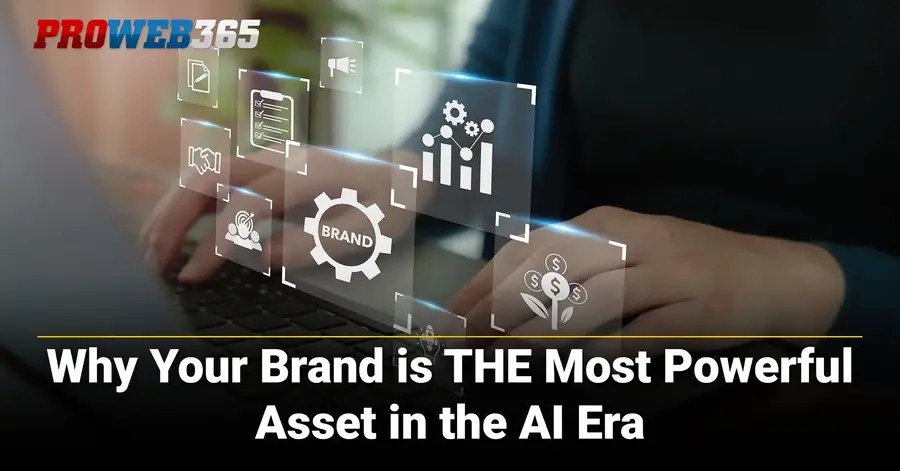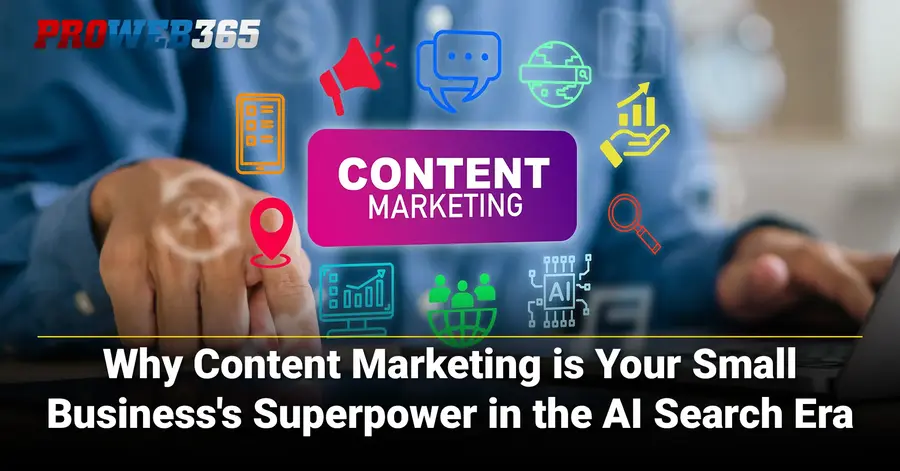Why Custom Website Design is a Wise Business Investment
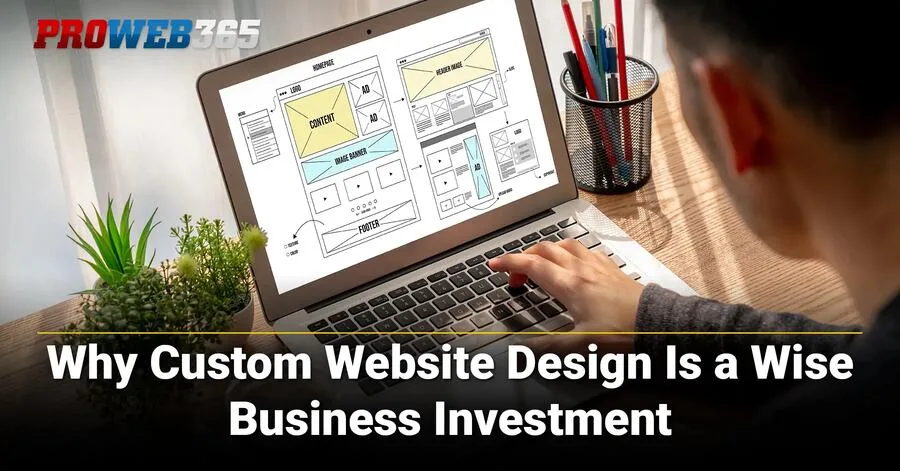
A strong online presence is essential for small and mid-size businesses (SMBs) today. A website acts as your virtual storefront, 24/7 sales representative, and above all, the first impression for potential customers. With rapid expansion throughout the global digital economy, regions such as Southeast Asia are projected to reach $1 trillion by 2030.
The main goal of the website is to connect with customers, generate leads, and drive sales. Serving as a central hub for business interactions, its quality directly impacts customer perception, interaction, and purchasing decisions. For these levels of businesses and enterprises (SMEs), their site is a vital competitive tool, crucial for thriving in the digital market.
Here, we will explain why custom website design is a strategic investment, offering significant returns and long-term success when built correctly. With many online options, we will explain why a professional, custom design is key for immediate engagement and building trust, and why a poorly done generic one will drive away potential consumers.
A Strategic Guide to Selecting a Great Website Designer
When you're a small to mid-size business owner or organizations, a website is more than just an online brochure; it's a foundational pillar for your identity, operations, and growth. In the AI era, a professional,...1. Custom vs. Template: Understanding the Fundamental Difference
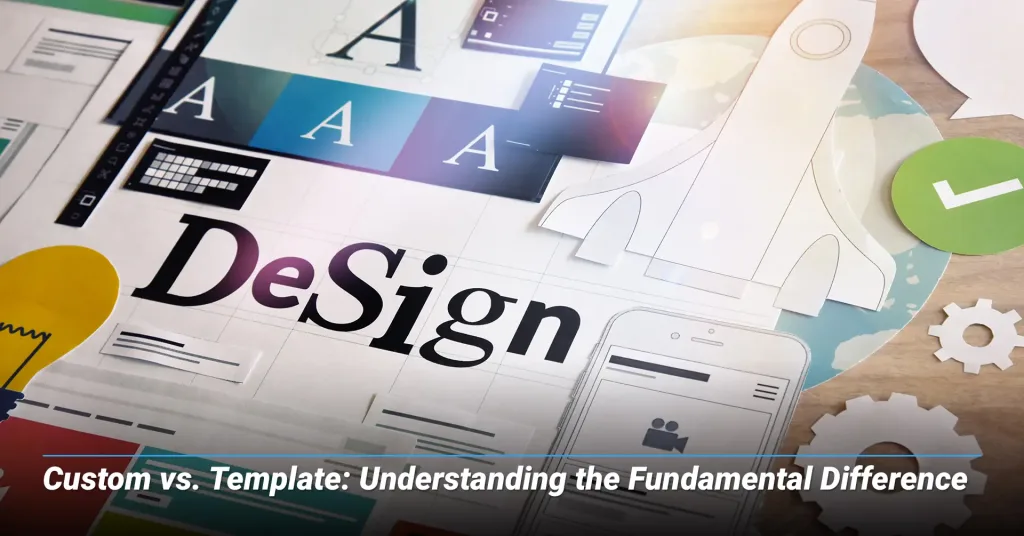
Template websites offer a quick, seemingly cost-effective online solution with pre-built layouts and minimal design input. However, what they lack in custom design is quickly evident by almost any viewer.
Initial template savings are quickly offset as they lead to higher long-term costs from technical debt, re-platforming, and lost opportunities due to poor website performance.
Templates often include unnecessary "overhead code" or "bloat" for unused features. Add-ons such as these slow down the site, harming performance and search-engine optimization (SEO). Such issues directly impact user experience and conversions. Templates also create developer dependency for updates and security, and may lack plugin compatibility. Future modifications can become complex, costly, or nearly impossible if support ends.
Table 1: Custom Website vs. Template Website Comparison
| Feature | Custom Website | Template Website |
|---|---|---|
| Flexibility | High flexibility, tailored to specific needs | Limited flexibility, costly modifications. |
| Scalability | Built for future growth and integration | Hinders scalability, slows with growth. |
| Brand Identity | Distinct and recognizable brand character | Risk of looking similar to other sites. |
| Performance | Optimized code, faster load times | Potential bloat and slower performance. |
| SEO Capabilities | Built for SEO from ground up | SEO limitations due to pre-set structures. |
| Long-Term Viability | Future-proof, adaptable to new technologies | Dependency on provider for updates. |
| Initial Cost | Higher initial investment | Lower initial investment. |
| Development Time | Longer development timeline | Quicker to implement. |
| Control | Full control over design and functionality | Limited control, provider restrictions. |
A Guide to Finding a Good Online Marketing Agency
To build a commanding online presence, especially as a mid-size business or organization, a variety of factors need to come together and be executed effectively. Understanding your audience and connecting with them requires a high-performing...2. The Unrivaled Advantages of a Tailored Online Presence
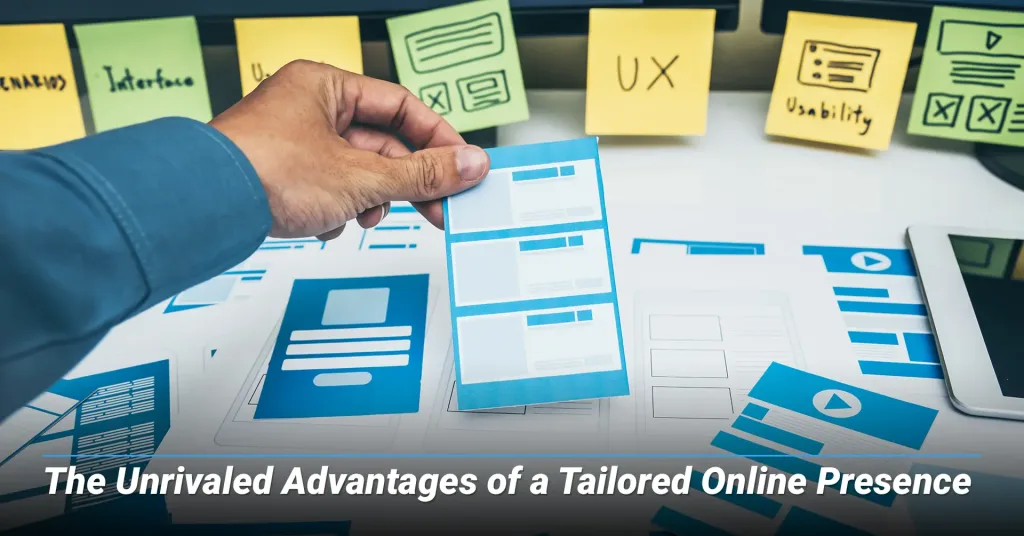
A. Building a Unique Brand Identity
Custom websites create a distinct, recognizable brand identity and a memorable user experience. They ensure visuals, messaging, and engaging content reflect company values and offerings. Staying consistent across digital and linear channels strengthens recognition throughout the industry while boosting trust with consumers. Unlike generic templates, a custom site extends your "brand personality," telling a cohesive story that engages users.
B. Crafting an Exceptional User Experience (UX)
Custom web development aims to achieve an unforgettable user journey. This translates into easy navigation, fast load times, and responsive design across all devices. Standout UX (User Experience) is vital for retaining visitors, reducing bounce rates, and increasing conversions. Research shows the average website bounce rate is between 26% and 70%, with superior sites achieving rates between 26% and 40%.
This, combined with advanced SEO in custom design, creates a successful feedback loop for growth. In this partnership, UX keeps visitors on the site longer, sending positive signals to search engines. SEO then attracts more qualified organic traffic, making it more likely to engage audiences and convert.
C. Unlocking Advanced SEO Power
Custom designs provide an ideal foundation for effective SEO that pre-determined templates lack. Professional developers implement advanced features ranging from comprehensive SEO to integrated analytics. Custom websites allow precise control over site architecture, speed optimization, mobile responsiveness, and structured data.
Organic search accounts for 53% of all website traffic, making optimization of this crucial. Google's mobile-first indexing means ranking is mainly determined after analyzing the version of the site that appears on phones and other mobile devices. Custom responsive design ensures flawless function on any device, which Google favors.
D. Driving Higher Conversion Rates
A website's main goal is to convert visitors into customers. Custom design achieves this through engaging, personalized user experiences. Strategic placement of clear, compelling Call-to-Actions (CTAs) is crucial for boosting conversions.
Key conversion benefits:
- Personalized experiences can increase conversion rates by 20%
- Well-designed interfaces with an easily organized checkout process can boost sales by 15%
- Strategic CTA placement guides visitors toward desired actions
E. Ensuring Scalability and Future-Proofing
Custom web development inherently includes scalability and flexibility to grow with the business. These unique solutions integrate seamlessly with existing Customer Relationship Management (CRM) and Enterprise Resource Planning (ERP) systems, streamlining operations and eliminating compatibility issues. They can also be designed with the future in mind for emerging tech such as voice search and Augmented and Virtual Reality (AR/VR), when their services can offer these capabilities.
F. Boosting Credibility and Trust
A professional, user-friendly website creates a positive first impression and builds visitor confidence. Key trust elements include:
- Clean layouts and professional design.
- Easily accessible contact information.
- Robust security features and SSL certificates.
- Prominent customer testimonials and reviews.
- Security badges or trust seals (vital for e-commerce).
Why Your Brand is THE Most Powerful Asset in the AI Era
As AI begins to reshape browsing, so too is the digital landscape for small to mid-size businesses (SMBs). To go along with the tide, investing in brand strength is crucial for customer acquisition and sustainable...3. The ROI of Custom Website Design: A Smart Business Investment
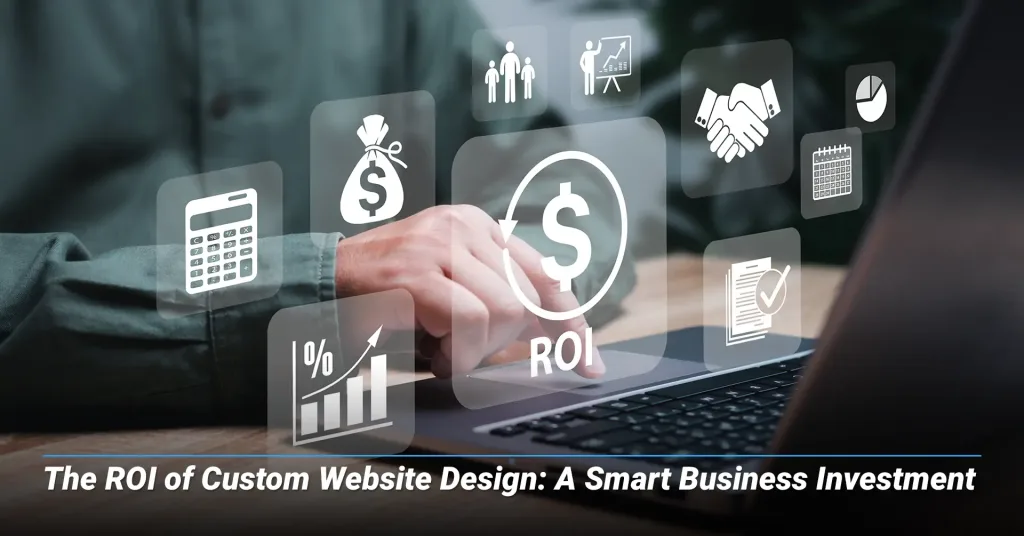
While custom web solutions have higher upfront costs, their long-term benefits are worth more than their sticker price. Treating the website as if it’s a reliable car, the initial investment leads to fewer costly repairs.
A. Costs and ROI Analysis
Table 2: Estimated Costs & ROI for Custom Websites (SMEs)
| Category | Typical Values (2025) | Notes |
|---|---|---|
| Initial Build Cost | $5,500 – $15,000 | Varies based on complexity and features. |
| Annual Maintenance | $2,600 – $9,000 | Updates, security, and ongoing support. |
| Time to See ROI | 6-12 months | Depends on traffic, SEO setup, and business. |
| Reported ROI for SMEs | 400%+ | Significant returns from optimized custom sites. |
B. Website vs. Social Media: The Ownership Advantage
Social media is valuable for discovery and visibility, but a website is where "real business happens" — capturing leads, improving SEO/GEO, and being the place where business transactions occur. A custom website is the only digital asset a business truly owns, offering control over content, design, and functionality.
Key advantages of website ownership:
- Full control over content, design, and functionality.
- Independence from algorithm changes and platform policies.
- 24/7 lead generation and conversion capabilities.
- Higher conversion rates than social media traffic.
Social media algorithms change, ad costs rise, and platforms can disappear, impacting business reach. When executed correctly, a custom website offers stability by converting leads 24/7. Organic search accounted for 53% of all website traffic in 2024, and SEO leads had a 15% close rate, much higher than cold outreach or social ads.
Why Content Marketing is Your Small Business's Superpower in the AI Search Era
Artificial intelligence (AI) is completely changing how search engines work, shifting the focus from simple keywords to understanding what people really want to find. For small businesses, this new digital landscape is a massive opportunity....4. Key Elements of a High-Performing Custom Website

A. Mobile-First Design
Mobile users have an average bounce rate of 56.8%, making a responsive design for this format essential. Custom designs ensure seamless adaptation to all screen sizes, which allow for reduced bounce rates and improved SEO, making the experience consistent for users across all devices.
Mobile optimization benefits:
- Improved Google rankings (mobile-first indexing).
- Reduced bounce rates and better user engagement.
- Increased conversions from mobile traffic.
B. Blazing Fast Site Speed
Page load time impacts user experience and search rankings. 47% of visitors bounce if a website takes longer than two seconds to load. Custom websites implement meticulous speed optimization through:
- Minimizing HTTP requests.
- Enabling caching mechanisms.
- Compressing images efficiently.
- Leveraging Content Delivery Networks (CDNs).
C. Compelling Content and Clear CTAs
The goal of website content should be to educate, solve problems, and answer questions. Google rewards relevant, updated, valuable content. Utilizing high-quality images, videos, and animations grabs attention and maintains engagement. Strategically placed, clear, action-oriented CTAs are crucial for guiding visitors and boosting conversions.
D. Advanced SEO Capabilities
Custom design facilitates deep technical SEO, allowing precise control over:
- Optimized heading tags (H1, H2, H3).
- Clean and descriptive URL structures.
- Effective image optimization (alt text, file names).
- Robust internal linking strategies.
- Structured data (Schema markup) support.
- Voice search optimization.
The Small Business Guide to Winning Customers Through AI Search Optimization
The internet is constantly evolving, and AI in search engines is being used to find business for customers. For small to mid-size business owners, understanding and adapting to these technological advances is crucial for growth....5. Avoiding the Pitfalls: The Cost of a "Half-Baked" Website
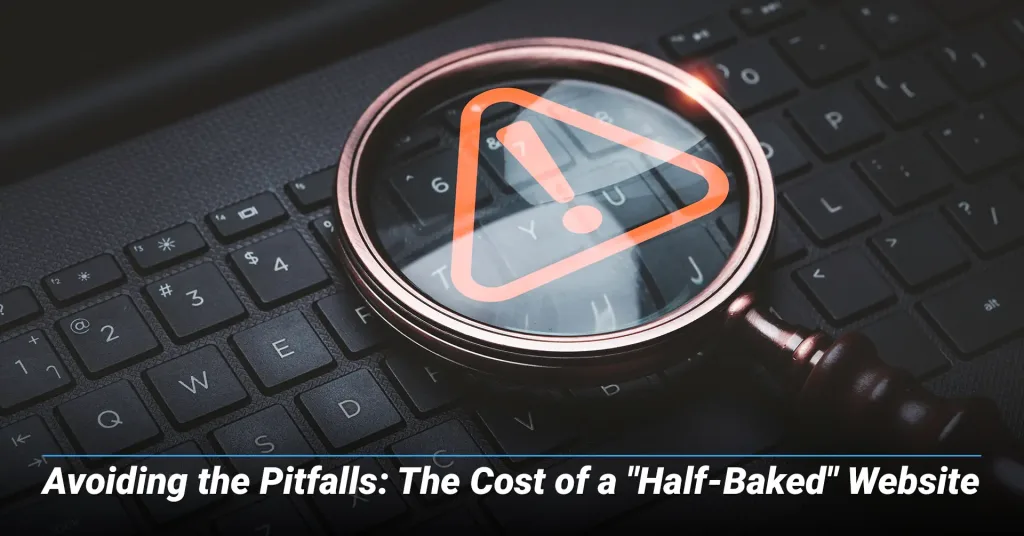
Failing to invest in professional, custom website design has significant consequences beyond appearance. These underdeveloped websites negatively impact business metrics, leading to substantial revenue loss.
A. High Bounce Rates & Poor SEO
If a website is not user-friendly, loads slowly, or lacks visual appeal, visitors quickly leave. The average bounce rate for eCommerce sites hovers in the 20% to 45% range, while poorly designed sites can see rates above 70%. High bounce rates signal low content value to search engines, harming rankings and reducing organic visibility.
B. Limited Mobile Accessibility & Lost Credibility
Limited mobile accessibility is a critical flaw. If a website isn't mobile-compatible, it won't display professionally on smartphones and tablets, causing users to abandon it for other competitors. A poorly designed website also creates a negative first impression and loses credibility, resulting in lost opportunities and a significant lack of trust.
C. Maintenance Difficulties & Wasted Investment
"Half-baked" websites often pose maintenance and update difficulties. Unqualified designers or template limitations lead to ongoing frustration, time, and unexpected expenses for future edits. This culminates in wasted investment, often requiring a second, more costly attempt with a qualified company to fix issues.
Common problems include:
- Difficult or impossible updates and modifications.
- Security vulnerabilities and compatibility issues.
- Poor performance that worsens over time.
- Need for complete rebuilds, doubling costs.
Conclusion: Invest in Your Digital Future
A custom website is a strategic, long-term investment offering a unique brand identity, an exceptional user experience, powerful SEO, and scalability. With quantifiable ROI often exceeding 400%, custom design represents the smartest digital investment for SMEs. Unlike static templates, custom sites adapt to market changes and integrate new technologies, allowing for quick retools when necessary. Prioritizing a custom-built, SEO-optimized website is crucial for attracting customers, enhancing brand image, and driving consistent leads and sales 24/7.
How Much Does Web Design Cost in 2025? The Ultimate Guide for Businesses
A website in 2025 is the equivalent of being in the Yellow Pages during the 2000s. Standard, expected, it serves as the cornerstone of one’s presence, providing information to consumers 24/7 even when their lights...Frequently Asked Questions about Custom Website Design
1. How long does it typically take to build a custom website?
For a standard small business site, expect 6-7 weeks. Simpler sites (1-3 pages) can launch in 3 weeks, while complex builds (e-commerce, custom features) may take 8-12+ weeks.
2. What are the typical ongoing maintenance costs?
It’s best to maintain a monthly maintenance budget for small business websites between $200-$900. This will cover security monitoring, updates, backups, performance optimization, and technical support.
3. How can I measure the ROI of my custom website?
Calculate ROI by subtracting the website's cost from the increase in revenue it generates, then dividing by the cost: (Increase in Revenue – Cost) / Cost = ROI. Use analytics tools, Urchin Tracking Module (UTM) parameters, and CRM systems to track leads and conversions.
4. What are the initial steps before starting a custom website project?
Define your website's purpose and goals, research competitors, identify its unique value proposition, register a suitable domain name, choose a hosting plan, and select a qualified developer.
5. How does a custom website enhance security?
Custom websites allow developers to implement robust, tailored security measures from the ground up, avoiding vulnerabilities often found in generic templates. This bespoke approach helps protect against external threats and ensures your online presence comes across as trustworthy and secure.

Phong Nguyen
Phong brings the perfect combination of business acumen and technical expertise to digital marketing. Armed with a Bachelor of Arts degree from St. Olaf College, a master’s in business administration in Marketing from the University of St. Thomas, and SEO/GEO from “The School of Hard Knocks,” Phong founded ProWeb365.com in 2009 to help Minnesota businesses and non-profit organizations succeed online.
For over 15 years, Phong and his team’s strategic approach has combined data-driven marketing with conversion-focused design, delivering measurable results that directly impact his clients’ bottom line. Are you ready to experience what innovative digital marketing can do for your business in the age of AI search engines? Contact Us today!




